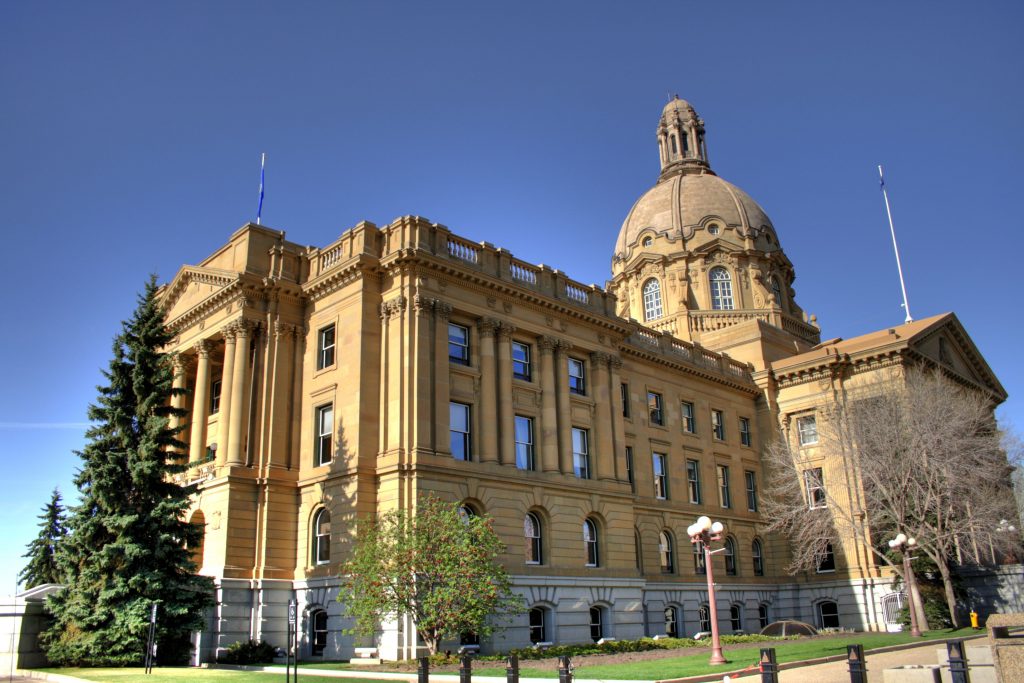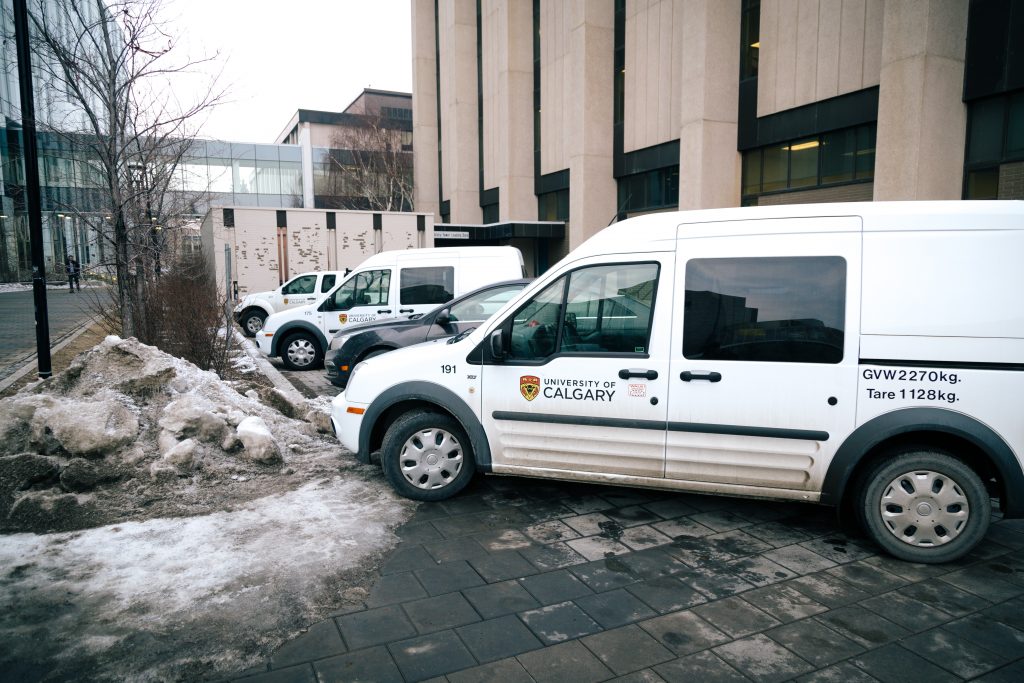
U of C economist Trevor Tombe talks provincial carbon tax
By Scott Strasser, January 20 2017 —
The Alberta New Democratic Party government’s carbon tax went into effect on Jan. 1, putting a price on using fuels that emit greenhouse gases in the province. The tax is currently set at $20 per tonne of carbon emissions and will rise to $30 per tonne in 2018 and $50 per tonne in 2022.
Since being announced, the controversial tax has faced backlash across the province. The Gauntlet spoke with University of Calgary economist Trevor Tombe about the new carbon tax and how it might impact the U of C.
Gauntlet: What is carbon taxing and why would a government implement one?
Trevor Tombe: Any time we burn fuel we emit greenhouse gases into the atmosphere and this contributes to climate change. What we’re doing by not pricing carbon is make decisions as households and businesses that don’t take into account the full cost of our choices. The carbon tax is meant to ensure when we decide to drive somewhere or heat our homes in particular ways — making choices that contribute to climate change — we do so recognizing the full cost of our choices.
When we set the tax at $20 per tonne, that’s going to increase to $50 per tonne by 2022. This is really meant to try and capture what we estimate to be the monetary cost equivalent of climate change. It’s what economists call the social cost of carbon.
G: So essentially, it’s an incentive to shift towards more energy efficient choices?
T: Yes, but importantly to incentivize changes in behaviours that are the least costly ways of lowering emissions. There are millions of potential small choices that we could make to lower emissions and ideally we want to do so in the most efficient, cost-effective way possible.

The NDP carbon tax went into effect Jan. 1. // Courtesy Winterforce
A government could decide to regulate what kind of machinery businesses use, what type of windows we install or what type of light bulbs we use. But governments are typically unable to know precisely what is the most effective and cheapest way to lower emissions. What the carbon tax does is harness the power of markets and individual decisions we make every day to lower emissions. The government doesn’t need to know what those choices are. They simply provide the incentives and let the chips fall where they may.
G: Why has this tax received a lot of backlash from across the province?
T: Some taxes are just more salient than others. Tariffs, for example. We all pay to the federal government various taxes when we import products from abroad. The average Albertan pays roughly the same amount in federal tariffs as they will pay in carbon taxes. Yet nobody complains to the extent we’ve seen with the carbon tax about tariffs. Some taxes are too hidden for people to grab onto and rally behind. The average Alberta household pays a little over $20,000 a year in income taxes. And yet the backlash around what really amounts to $200–$300 [a year] in carbon taxes is generating quite a bit of opposition.
It’s something we need to take a breath and have a calm discussion about. The objective [of the tax] is to lower emissions, and certainly some don’t want to lower emissions at all, they wouldn’t recognize that carbon change exists or [see it as] something we should do anything about. But once we decide that yes, we want to lower emissions, the question is, should we use the most efficient tool to do so, and that’s carbon pricing, whether it’s cap and trade or carbon taxing.
G: The cap and trade system is used in other provinces, including Ontario and Québec. What is the difference between a carbon tax and a cap and trade system? And why did Alberta not want to go down the cap and trade road?
T: They’re both ways we can put a price on carbon emissions and incentivize households and businesses to make decisions that incorporate the full cost of those actions. A carbon tax does this by choosing the price and keeping that fixed. So British Columbia has a $30 per tonne tax, Alberta will move to that next year and we both will move to $50 by 2022. But the emissions that result under a carbon tax system are not guaranteed. They can fluctuate based on various economic conditions and other factors. We fix the price and let the quantities of emissions float around.
A cap and trade system on the other hand fixes the amount of emissions. They choose how much emissions they want each year, so Ontario and Québec have a certain level and then they auction those emissions off. The price in this system is the uncertain thing that can move around from one year to the next.
They’re two different systems, with one putting emphasis on certainty in terms of future emissions and the other putting emphasis on certainty in terms of price on carbon.
There are pros and cons for both and for different provinces — one system makes better sense than the other. For a province like Alberta, with lots of emissions associated with the oil and gas sector, this is a sector whose emissions will fluctuate with the price of oil. How many emissions are located in Alberta depend on factors further beyond our province’s control than say, Ontario’s. So a cap and trade would be less suited to the structure of Alberta’s economy.
G: You’ve mentioned some pros, but what are some cons of the carbon tax, from an economist’s perspective?
T: Any action on lowering emissions is going to have costs, so the carbon tax will shrink Alberta’s economy relative to where it otherwise would have been. The government estimates the overall Climate Leadership package will shave about 0.05 per cent off of Gross Domestic Product growth over the next couple of years, so out into the early 2020s we’re looking at about a billion dollars or so in lower GDP. That’s about 0.3–0.4 per cent lower GDP.

Tombe said the U of C’s fuel expenses will increase with the tax // Photo by Justin Quaintance
There are costs to lowering emissions, but those costs are less than alternative ways we might try to lower emissions. A high profile issue right now is pipelines. There’s opposition to new pipeline construction projects — TransMountain in particular — with an emphasis on blocking the pipelines to help lower our emissions. That’s certainly one way to lower emissions, but the economic costs are substantially higher.
G: How will the tax impact U of C students on a day-to-day basis? Obviously many will qualify for the rebates the government has set up, due to the average student’s income level.
T: I’m glad you mentioned the rebates. This is an important part of the carbon pricing plan. If we increased the cost of energy, this will disproportionately burden lower-income households, who spend a higher fraction of their income on goods and services, as well as energy-intensive goods. Providing rebates ensures our carbon tax is not regressive. The way they’ve been calibrated makes the package progressive. The lowest [earning] one third of households on average will receive rebates that are larger than the carbon tax they’re expected to pay. For the middle third, it’s a wash and the top third will typically not get any rebates.
Of all the college and university students in the province, 80 per cent will receive a rebate. This year that rebate is worth $200, next year $300. Given that most students don’t have a lot of fuel expenditures, those rebates are going to be larger than their expected costs. The tax for students is not something that will lower their overall standard of living.
G: What about the U of C as an institution? Surely we emit lots of carbon emissions.
T: The U of C will see higher costs as a result. You see university vehicles around campus that burn gasoline. We’ll pay more for gasoline. And to heat the building we’re in right now for example, there’s going to be expenditures associated with that. Natural gas is going to be more expensive. The university overall spends about $1.2 or $1.3 billion in total expenditures. Utilities is a little under two per cent of that total spending. The overall utility bill is going to rise just modestly.
I’d say the increased cost for the university as a whole is quite modest. The university hasn’t calculated that precisely, but for context, the Calgary Board of Education is an entity of roughly similar size to the U of C in terms of total spending. And the CBE estimates the carbon tax will cost them about $1 million per year. If we think the U of C will see higher costs of roughly a similar order of magnitude, it might cost an extra $1 million per year. That’s out of a budget of $1.2 billion, so it’s not something I think any of us will notice on a day-to-day basis.
